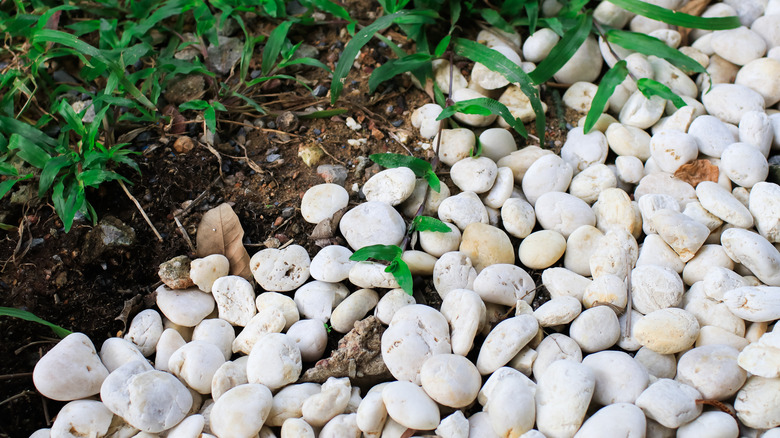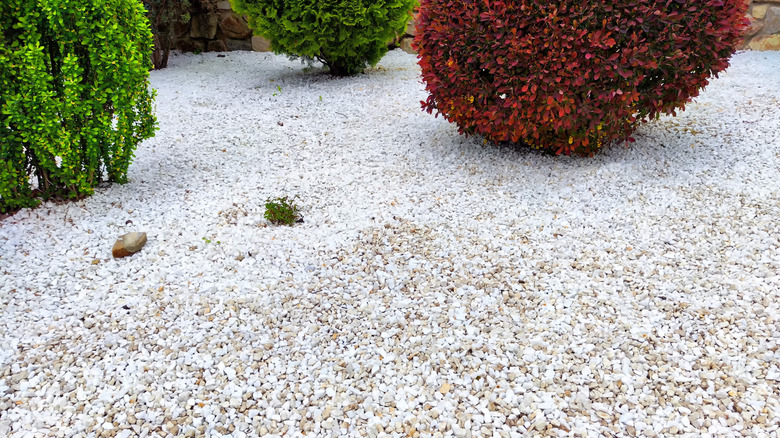Is White Gravel A Good Choice For Landscaping? Here's What You Need To Consider
So you've been browsing through gorgeous landscaping ideas to liven up your yard and came across white rocks. Now you're wondering how good are they for landscaping. These tend to catch the eye the most with their unusual, snow-like appearance. Many use them as a base in zen gardens and Mediterranean-style backyards. Others arrange them into pathways and borders. Perhaps the best part is that they beautifully highlight plants and flowers that would otherwise get lost on the ground.
Of course, as with any material, there are potential drawbacks to consider. The most significant one? White gravel easily shows dirt compared to other different types of rock to use in landscaping. And just like white clothes, they also need to be washed more often — or worst case scenario, brushed if stained. This can be a dealbreaker if you're looking to create a low-maintenance garden. But don't scratch the idea just yet. Read on to learn more about the advantages and disadvantages of white gravel, and decide which side outweighs the other for your (and your garden's) needs.
Exploring the pros and cons of white rocks
Beyond their pretty looks and versatility, white stones are very reflective. This means they can brighten up dreary exteriors, which is especially convenient if you're revamping shady areas with little to no direct sunlight. At the same time, their reflective nature can be too glaring and create an extreme contrast when it's overly sunny. This wouldn't be an issue in a vibrant garden, but we can't say the same for an outdoor space with a more relaxed ambiance. However, because white rocks reflect sunlight, they help keep the surrounding ground a little cooler than, say, gray rocks. No burned bare feet on their watch.
As mentioned earlier, dirt, algae, and grime are its worst enemies — so you'll need to regularly clean your landscaping rocks to keep them looking their best. You can do this with a pressure washer hose, dish soap, or a mixture of white vinegar and water. Our word of advice is to start with a small area that's easier to keep up with before moving on to bigger white rock landscaping projects. Also, don't be surprised if your bright stones discolor over time. That's to be expected, and iron oxidation, acid rain, soil pigments, and natural wear and tear are usually to blame.

